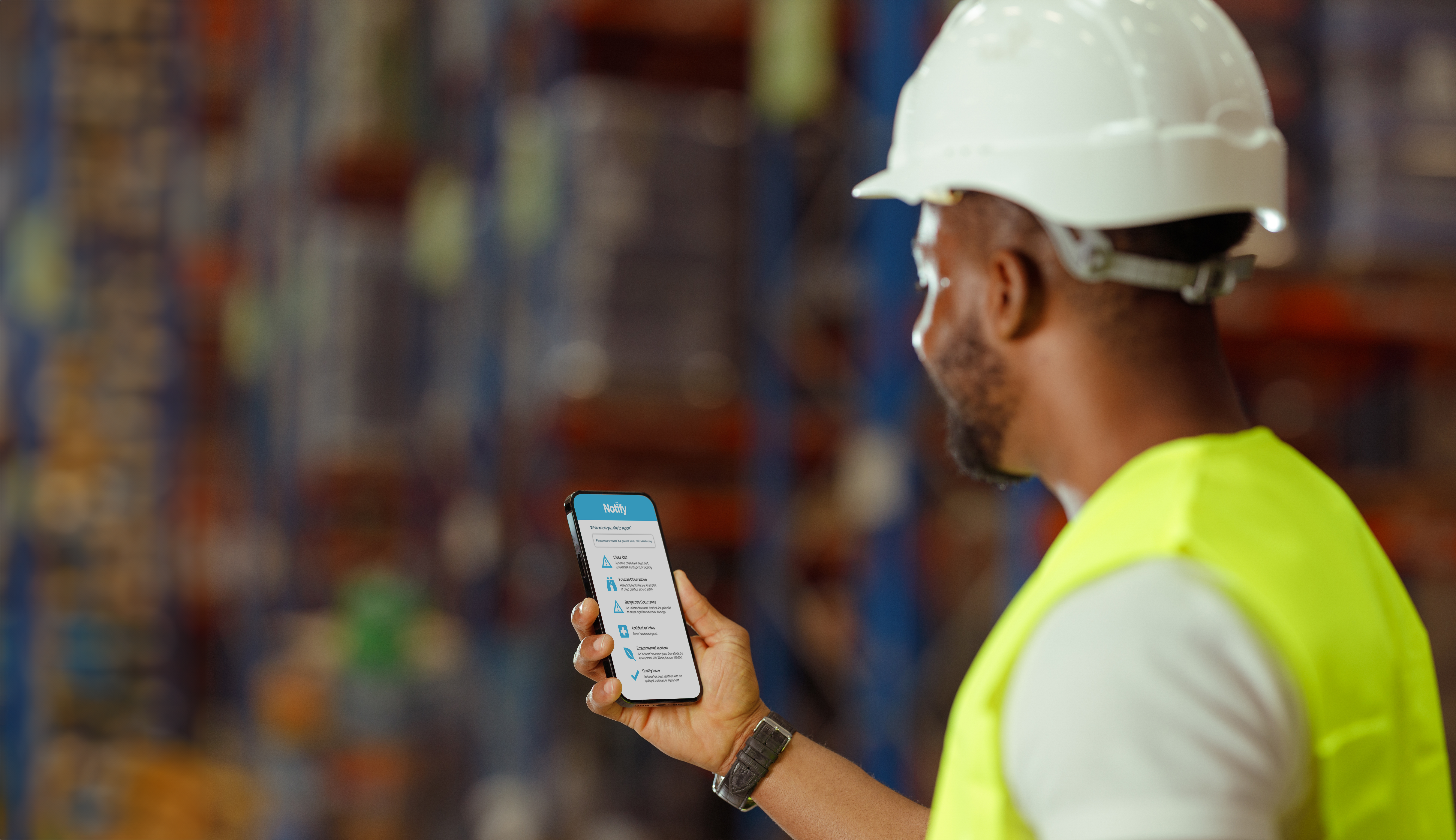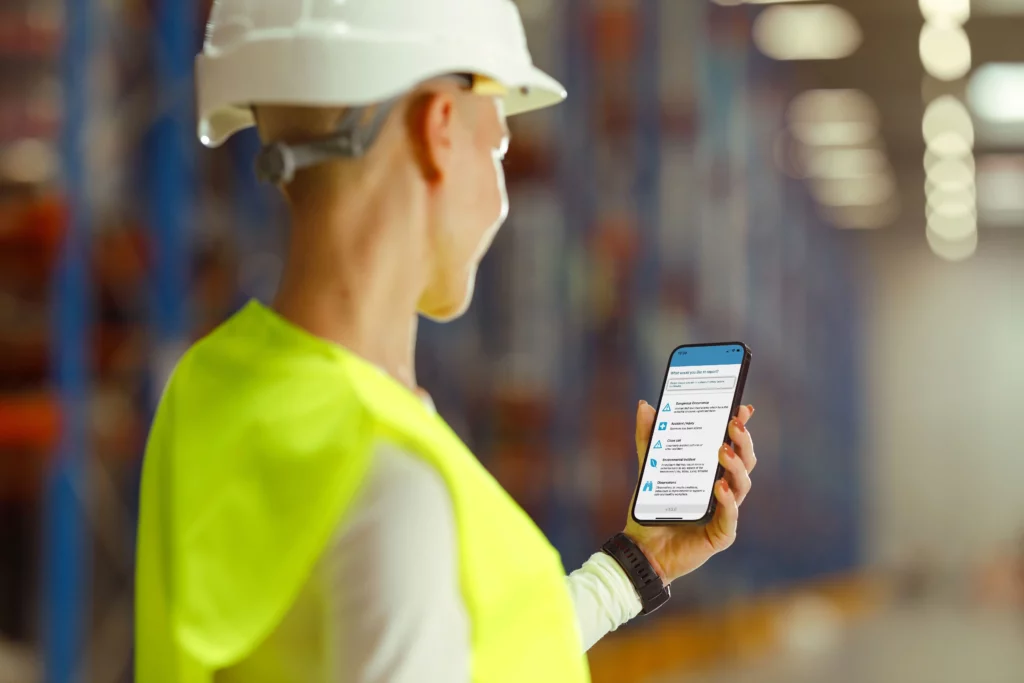We know that health and safety culture impacts an organisation’s success. Good health and safety practice not only positively impacts your overall safety outcomes, but can also result in higher staff engagement, productivity and is ultimately good for business.
An engaged workforce and timely and accurate safety reporting is key to this success. So what does a proactive workplace reporting culture look like and what steps can you take to create and maintain a safe reporting environment?
What does a safe and proactive reporting culture look like?
Defining and creating a general ‘workplace culture’ has become something of a buzzword for companies across all sectors. What ‘workplace culture’ boils down to is simply the policies an organisation has in place and how they are carried out. In essence, it means looking at what is supposed to happen compared to how things happen in reality. In an organisation with a positive workplace culture, these two things are one and the same. Setting robust policies and following through with them is a crucial part of creating a safe and proactive health and safety culture.
According to Dean Tillbrook, Global HSE Officer at the food inspection and safety company Cotecna, an effective safety culture is ‘one in which safety events are reported before they become near misses and accidents’. For this to happen, both management and employees need to be active and engaged in shaping, updating and upholding a company’s health and safety policies and procedures. They should also be proactive when it comes to spotting hazards or potential risks. A sign of a proactive reporting culture is one where employees report on safety events without being told, or without their supervisor being present.
Your health and safety policies should be reflective of your workplace today, not six months or even six years ago when they were first written up. Regular staff training, policy updates and timely communications are key to creating a safe and proactive reporting culture. That said, we know maintaining high levels of employee engagement with health and safety reporting can be challenging.
Why do some employees not report safety incidents and accidents
There can be several reasons why employees might feel reluctant to report near misses, safety incidents and accidents that happen in the workplace. A common reason is that the system for reporting safety incidents is simply too time-consuming. When employees already have a full workload, finding time to carry out a complicated, paper-heavy reporting procedure might feel like an impossible task, even for those who recognise the importance of good reporting.
Another barrier to reporting could be a lack of training or knowledge about the company’s health and safety procedures. This could lead to reports being submitted incorrectly or without key details, resulting in missed opportunities to learn more about workplace hazards and how to mitigate potential risks. In some cases, employees may not realise they have to submit a report at all and the hazard or incident goes unnoticed and undocumented.
If a company is guilty of creating a culture of blame, where making a mistake results in harsh consequences, employees may feel reluctant to speak up about incidents. Employees could be worried that reporting a near miss or a hazard for example. will lead to undeserved disciplinary action or even contract termination for themselves or their colleagues. They might believe that any future blame will automatically be placed on them as a result of historic reporting. It’s understandable why an employee would be hesitant to report in a culture like this.
Another example of how wider workplace culture can influence the likelihood of employees reporting a near miss, incident or accidents is whether or not those employees believe that something will be done as a result of their report. Is your senior team actively engaged in promoting good health and safety practices? Do they respond positively to good reporting and make changes as a result? Do employees get recognition for reporting? If employees don’t feel their reports are being seen and acted on, they may feel less motivated to speak up in the first place.
Good reporting practice is important to implement across a whole organisation, even for employees who work remotely or who are contractors. Those who are self-employed have some of the lowest results when it comes to safety reporting, with just 12% of workplace incidents being reported by self-employed workers.
A lack of reporting, particularly around minor incidents or near misses, might seem harmless or even permissible to some employees.. However, this attitude can lead to complacency that could become more widespread and ultimately result in serious harm, injury or even fatality. More than that, both employers and employees have legal responsibilities to consider when it comes to reporting safety incidents at work.
Do employees have a legal responsibility to report safety issues?
Just as employers are legally responsible for the health, safety and overall well-being of those who work in their organisation, employees also have safety responsibilities that they should consider. As well as having the right to things like personal protective equipment, rest breaks and regular health and safety training, employees must also carry out their work in a way that keeps them and their colleagues safe.
Some of these legal responsibilities may seem obvious or straightforward. Employees shouldn’t wear excessive jewellery, or baggy clothing or have long hair loose if they are operating machinery, for example. Actions like attending all relevant health and safety training, complying with company policies and not tampering with company machinery should go without saying. What employees might not realise is that, as well as having the legal responsibility to work to prevent accidents, they are also responsible for reporting any accidents, incidents, hazards or near-misses that they know about.
Both parties, employers and employees, should work together to create this culture of proactive and effective reporting. Here are five actions that you can take to improve your company’s health and safety reporting and ensure your employees feel confident and engaged.
How to create a safe and proactive reporting culture amongst your employees
Have good health and safety policies in place
A good safety culture starts with good safety policies and procedures. Ideally, these should be created in collaboration with your wider staff team and workforce and they should be easy to access and understand. It’s important that everyone across your organisation feels invested in the safety of their workplace. Moreover, your employees are often best placed to identify potential hazards in their everyday work environment. Relying on their day-to-day knowledge is a great way to ensure your health and safety policies, processes and procedures are effective and up to date.
Keep your employees engaged with regular and relevant training
While it’s good practice to involve your employees in the creation of a health and safety policy, it’s just as important to keep them engaged in upholding safety in the workplace. Make sure that your employees know when and how to report accidents and incidents, as well as how to identify hazards in the first place. You can do this through regular employee training that is relevant to their department or role. Regular training helps to normalise identifying and reporting on health and safety issues, rather than employees seeing it as a ‘nice to have’ or just an add-on to their workload.
Make it easy to report
Even the most engaged and proactive employees will find a complicated or time-consuming reporting process a barrier to sharing safety information with you. Making it easy to report a safety issue, no matter how serious, is critical for employee engagement. Using health and safety technology, like Notify’s incident management and reporting app, can streamline this process for you and your teams. Employees can report hazards, near misses, incidents and accidents in seconds, from their phone or desktop. What’s more, is that reporting can also be anonymous, meaning employees can report without fear or blame. Managers can also be notified right away and corrective actions can be implemented as soon as an issue is identified.
Communication is key – but so is action
Ensuring your employees feel able to raise concerns around workplace safety and report proactively is great. What’s even better is when they see management working to improve safety standards in direct response to their reports and feedback. This shows leadership from senior team members and helps to build trust across your organisation. Asking for feedback and suggestions regularly contributes to a feeling of shared responsibility, which in turn will make your company a happier and safer place to work.
Highlight and reward proactive reporting
As we mentioned earlier, blaming or punishing employees when they report an issue is a sure fire way to destroy any sense of positive health and safety culture. Everyone makes mistakes. Feeling able to share mistakes and what might be learned is what helps to create a safer work environment. Rather than punishing employees, make an effort to highlight and reward proactive reporting instead. From a simple verbal ‘well done’, to shouting out positive action in a company newsletter, to nominating employees for company awards, a little recognition goes a long way in motivating your teams to play their part in a safe reporting culture.
How can Notify’s Incident Management and Reporting Software help?
If you’re looking to boost your employee engagement and make it easier for everyone to report safety events, Notify has the technology to help. Our incident management and reporting software can be accessed by anyone in your organisation, at any time and from any device.
Employees can report incidents, accidents, hazards, near-misses and positive safety observations in seconds, cutting out the need for lengthy emails or messy paper filing. You or senior team members can then respond to events in real time, with notifications for high priority incidents. You can assign actions to colleagues in response to a report and resolve incidents more quickly. We’ve helped clients like Regional Water Authority cut the amount of time spent filing reports by 10%, which resulted in them seeing a 300% rise in the number of near miss reports being made – providing more learning to help prevent accidents and injuries
With our customisable safety intelligence dashboards, you can easily track and report on key KPIs such as LTIs or the AFR. Additionally, you can also use the data you’ve collected from your engaged employees to identify and analyse key safety trends in your workplace and take action to prioritise any areas for improvement. With our digital solution, employees can see the real value of their reporting and the positive impact it has on their wellbeing, their colleagues and their wider workplace. Get in touch to book your free demonstration and find out how Notify can help you cement a positive and long lasting health and safety culture with your company.



